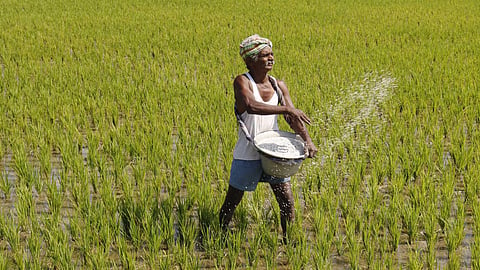

India’s growth is mainly backed by the existing rich natural and cultural resources. Capitalising on that, our tourism sector has witnessed one of the fastest growth rates worldwide. The travel and tourism industry has proven its importance as an economic growth engine for the world economy. For nine continuous years, its growth rate had exceeded that of the global economy.
In 2019, it grew at 3.5% compared to the global GDP growth rate of 2.5%. Accounting for 10.3% of total GDP, the industry contributed $8.9 trillion to the global GDP and created approximately 330 million jobs, one in 10 that year. The tourism sector makes a significant impact on the economy of our country. Data released by the World Travel and Tourism Council (WTTC) reveals that in 2019, the tourism industry in India contributed $194 billion to our GDP.
Due to the impact of the Covid-19 pandemic on the global economy, the WTTC is estimating losses of up to $2.7 trillion, with up to 100 million jobs at risk. The travel and tourism industry in India might see up to 40 million job losses (both direct and indirect) and about $17 billion in revenue losses in the next one year. In order to overcome this, the government, industry and institutions must make joint efforts to create a supportive ecosystem for tourism.
Tourism as an industry originally occurred at destination areas with natural or man-made features to attract tourists for a variety of leisure activities in different environments. Later, tourism evolved into different types and among those, agri-tourism is a new rising concept. According to the World Tourism Organization, Agri-tourism involves “accommodation being offered at the farmhouse, providing meals, and organising and assisting the participation of tourists in various farming operations”.
Agri-tourism includes a variety of activities and services such as farm accommodation, local food and beverage, festivals, nature observation, you-pick (harvest) activities, educational and leisure visits, hunting, fishing and sale of gifts. It was considered in many locations to be a low-investment, low-risk strategy as farms mainly made use of their existing resources.
Agri-tourism can fuel rural economies through the multiplier effect and the acquired benefits will be shared amongst different businesses within the community. Further development of agri-tourism leads to profit margins for farm products and services, particularly for small farms in crisis. In the US and in many European countries, farm and ranch stays continue to be popular.
The term ‘agri-tourism’ was initially used in the US, but it originated from an Italian National Legal Framework passed in 1985. This law promotes overnight farm stays to diversify the incomes of Italian farmers and support the landscape of farming operations. The seeds of agri-tourism in India were first sown by the formation of the Agri Tourism Development Corporation (ATDC) located at Baramati in Maharashtra. The ATDC was founded in 2004 by Pandurang Taware, an entrepreneur from the farming community.
It is a company that encourages agricultural tourism in Maharashtra and promotes it as a means of diversifying business opportunities and securing a feasible livelihood for farmers. Following a phase of research and an initial pilot programme in a village of Baramati district in 2005, the ATDC has grown, with some trained farmers and agri-tourism locations across the state of Maharashtra. Since its inception, farmers across the state have gained a 25% growth in their incomes.
Further, it has a policy of employing local youth as agri-tourism guides and specifically contracts women for food preparation services through organised women’s self-help groups. The Government of India has come up with a vision of doubling farmers’ incomes by 2022. However, economic indicators do not show equitable and egalitarian growth in this. To supplement and enhance farmers’ incomes, agri-tourism can be implemented as a secondary sector. But policies and guidelines for this concept are still insufficient in India.
Even for talented farmers and small businessmen, there are some significant barriers due to the lack of familiarity with tourist expectations. The transition from traditional agriculture to agri-tourism is quite a challenge. One major issue is successfully creating the products and services that tourists want. An increase in disposable income tied with shortened working days lead to demand for leisure activities, which greatly contributes to the success of agri-tourism.
Policies and subsidies directly targeting agri-tourism are important. Regional development policies and
models are equally necessary for the sound utilisation of local resources and creation of essential services to tourists in a specific region to increase agri-tourism income. Thus farmers can turn their farm lands into a tourist destination and open their doors to the public in order to share more about what they do. Simultaneously, they can gain income and their farm produce may also fetch better value.
This highlights the innovative nature of agri-tourism that can attract a new generation of farmers, offer new opportunities for youth development in rural areas and boost rural economy. In the words of Taware, “Come, pluck a fruit, smell a flower, run in the fields, lie on the hay and be lost in rural India.”
S Sarath (saraths1995@gmail.com)
Research Scholar, Tamil Nadu Agricultural University
S D Sivakumar
Director, Directorate of Agribusiness Development, TNAU